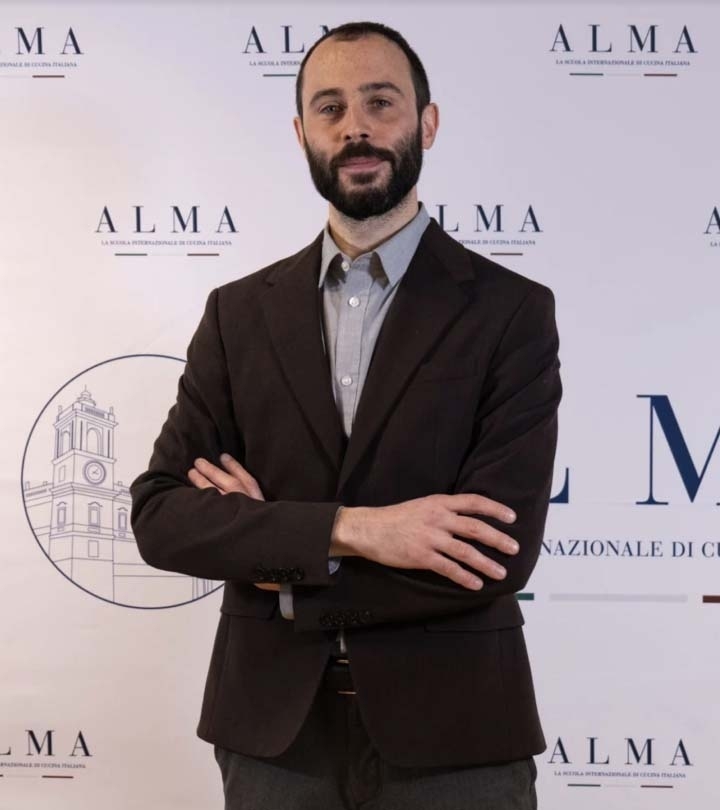The virtues of fresh food: a conscious choice
Fabio Amadei • Teacher of gastronomic culture at Alma - The International School of Italian Cuisine

Fabio Amadei • Teacher of gastronomic culture at Alma - The International School of Italian Cuisine

“When Nature and Culture come together for the wellbeing of people and the Planet, rediscovering fresh food becomes an exercise in responsibility”
For all intents and purposes, food is one of the cultural languages of every society. A powerful tool for knowing oneself and others. Various authors have called attention to the fact that the brain is the organ of taste, not so much the tongue. Since our childhood, we have been taught to widen our eyes for what is good and to wrinkle our nose to express disapproval. Instinct too comes into play in this mechanism of taste appreciation and disgust. It is undeniable that sweet attract us more that sour, at least at a young age. Along the way, memory is added: sensory memory takes us back along gastronomic journeys that we have already explored. Or, consciously, it can stir us towards alternative choices driven by new needs, new requirements, some compromises. When the choice of our own food is free and not curtailed by limitations or constrains, it becomes a genuine cultural process. Transforming a product into an ingredient is done by us when we activate creativity and talent to create a dish. So, we can argue that every day we eat the result of the curiosity and experimentation that has guided humans to distancing themselves, also physically, from a natural world at times too wild. In fact, for over seven million years we have been hunters and gatherers, left with no alternative but to follow the rhythms of nature and the limitations of an inevitably seasonal diet. Foraging, a very cool term for picking wild herbs, was a forced path to find some source of nourishment. In some cases, though, it could have turned into a dead-end, because even pickers need instinct and memory, therefore culture, to avoid finding out the effects of dangerous poisons at risk of their lives. Among the dreams of our ancestors who only knew what was fresh and just picked, a few millennia ago, there was the desire to be able to stop time, to decide when and what to eat. The transformation of fresh into preserved food is the result of cultural processes deeply rooted in the development of societies. The production of salted meats, for example, has its origin in ancient Roman times and it branches out in shapes, products and many gastronomic ideas, especially during the Middle Ages. So, Fresh or preserved? That is the question. It is interesting to see how the perception of these two terms has changed in relation to major changes in cooking (and history).
“You will use fresh quality products”. These are the beginning words of the 1960s Nouvelle Cuisine Manifesto, the revolutionary movement of international cuisine that started in France. The idea was to do away with lengthy cooking times, have lighter menus, and give more room to dietary matters at the restaurants. Culinary and taste demands that are mirrored in a profoundly transformed society. Those were the years when preserved products, the result of modern techniques developed by the food industry, became ever more accessible. They found their places in homes, daily life, in everyday food. The 1970s marked a significant change in dietary habits in Italy too. The Economic Boom transformed the appearance of society, culture and food in our country. As an example, Italians went from an annual beef consumption of 25kg per person in 1958 to over 54kg per person in 1970. More than the double in just twelve years. All that is a reflection of urbanization, households’ greater prosperity, more urban and less rural food purchases. This is proof that food choices are consequence and cause of social changes, of new lifestyles and new needs.
Let us circle back to the starting point: choosing our own food is a cultural gesture. Today, when Nature is Culture, when we are increasingly more engaged in finding solutions for the wellbeing of people and the Planet, rediscovering the pleasant spontaneity of freshness is beneficial. This mean re-appreciating the concept of seasonality, studying nature’s rhythms partly obscured by the era of technology, choosing products at their maximum nutritional value. Whenever possible, fresh means good and beautiful, better texture, maximum aroma expression, full colour and proper seasonality. It means reconnecting with food producing places, also in urban settings, where, among other things, humans are also what they grow.